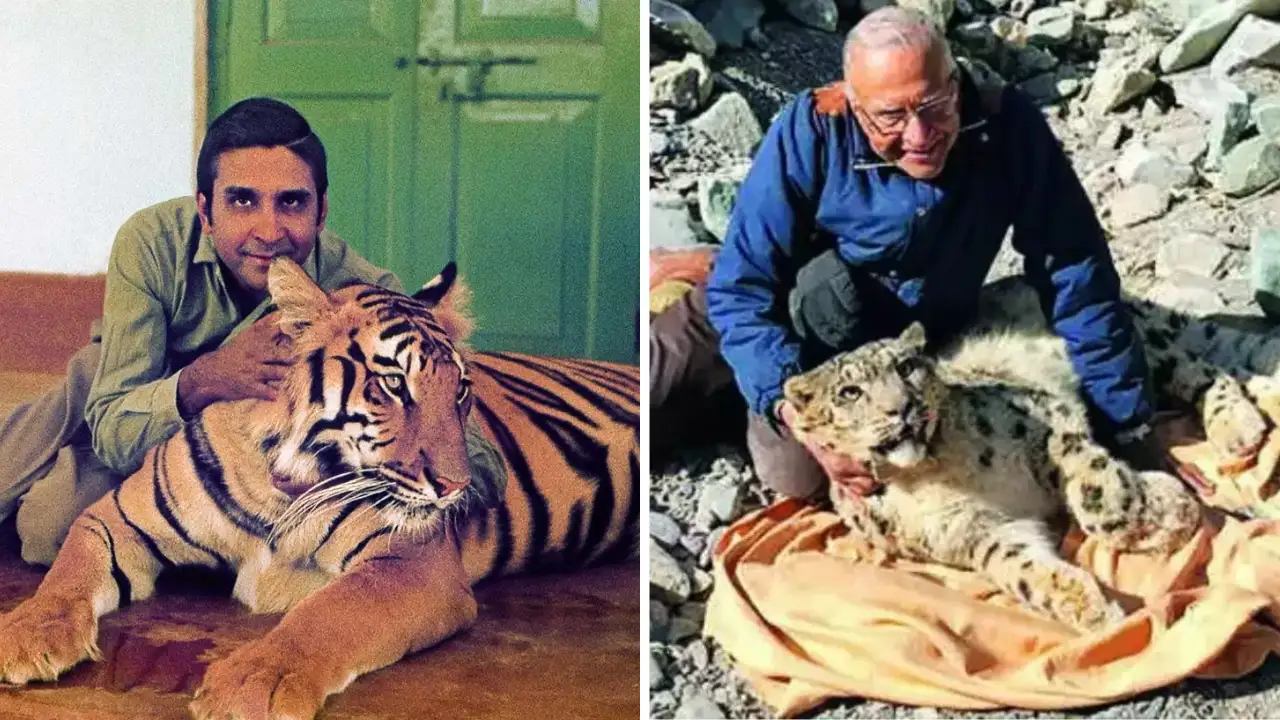By Ishita Roy
As a boy in Wankaner, a princely town in Gujarat, young Ranjitsinh Jhala once stumbled upon a python coiled beneath the palace steps. While the palace guards panicked and called for weapons, the boy stood still, observing. He didn鈥檛 flinch, didn鈥檛 scream. Instead, he was captivated. That moment鈥攆earless, curious, connected鈥攚as the beginning of a lifelong bond with the wild. Decades later, that same boy would grow into Dr. M.K. Ranjitsinh Jhala, known across the world not for his lineage, but for leading India鈥檚 fight for wildlife conservation. Today, at 85, he is remembered not as the prince of Wankaner, but as India鈥檚 Cheetah Man鈥攁 rare royal who gave up a life of luxury to serve the voiceless creatures of the forest. Leaving Royalty Behind Born in 1939 into the aristocratic Jhala dynasty, Ranjitsinh was heir to the Wankaner state, one of Saurashtra鈥檚 most prominent princely families. But unlike many royals who embraced their lineage, he saw life differently. From an early age, he detested the senseless hunting of wild animals and the rampant deforestation around him. This is when Ranjitsinh shocked his family by deciding to give his royal life up. He chose to pursue the Indian Administrative Service (IAS. In 1961, he cracked it and joined the Madhya Pradesh cadre. From that moment on, his world shifted from palace corridors to dense forests. Crafting India鈥檚 Wildlife Future Once in the service, Ranjitsinh鈥檚 commitment was clear. One of his earliest assignments involved protecting the barasingha鈥攖he swamp deer鈥攖hen on the verge of extinction in central India. But his biggest impact was yet to come. In 1972, as India鈥檚 Deputy Secretary for Forests and Wildlife, Ranjitsinh authored the Wildlife (Protection) Act. It became鈥攁nd remains鈥擨ndia鈥檚 foundational law for safeguarding its flora and fauna. Under this law, he laid down the framework for funding, protecting, and expanding national parks and sanctuaries across the country. He was also a founding architect of Project Tiger, the iconic initiative launched in 1973 to protect India鈥檚 tigers, many of whom were falling prey to unchecked poaching and habitat loss. Later, as the first Director of Wildlife Preservation in India, he transformed conservation from an afterthought to a national priority. On The Cheetah Spree Perhaps his most ambitious and long-standing dream was to bring back the cheetah鈥攅xtinct in India since the 1950s. In the 1970s, Ranjitsinh initiated talks with Iran to relocate Asiatic cheetahs to India, but the project was shelved due to political upheaval during the Emergency. Undeterred, he revived the idea in 2009 through the African Cheetah Introduction Project. Despite years of debate and delay, the Supreme Court finally approved the plan in 2020, and Ranjitsinh was appointed to lead the expert committee. His lifelong dream was now close to becoming reality, cementing his legacy as India鈥檚 Cheetah Man. A Global Voice for Wildlife Between 1975 and 1980, he served as Nature Conservation Adviser to the United Nations Environment Programme (UNEP) in Bangkok. Upon returning to India, he continued managing and developing 11 sanctuaries and 8 national parks, tirelessly expanding protected forest land鈥攐ver 9,000 square kilometres in all. His global influence extended to critical policies, including bans on snake skin, animal fur, and crocodile skin exports. He also led institutions like the Wildlife Trust of India and served as Director General of WWF鈥檚 Tiger Conservation Programme.
